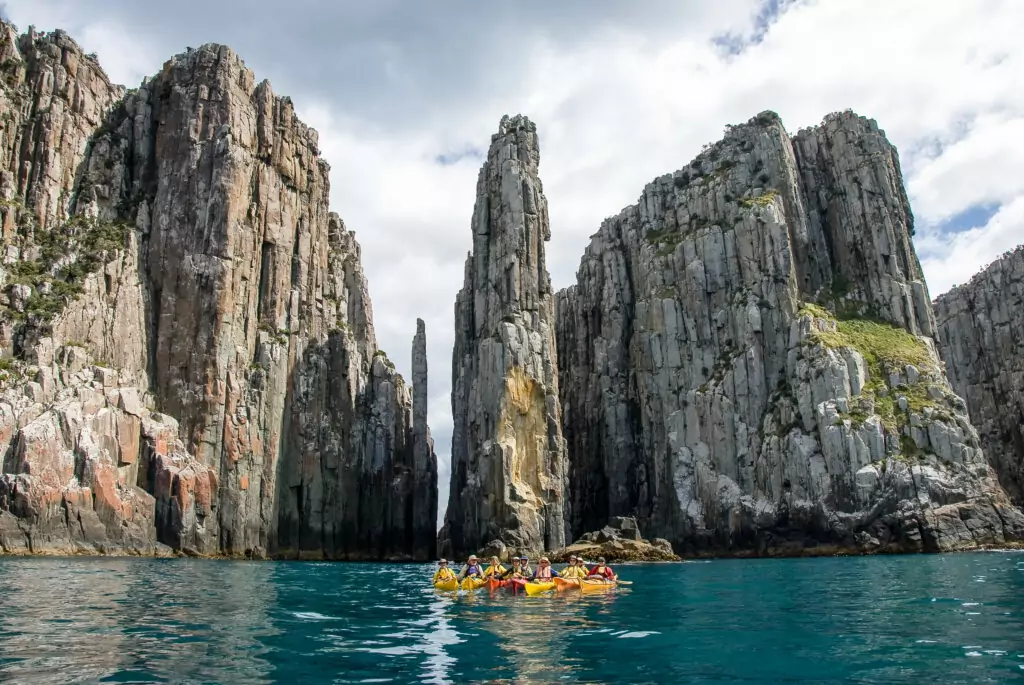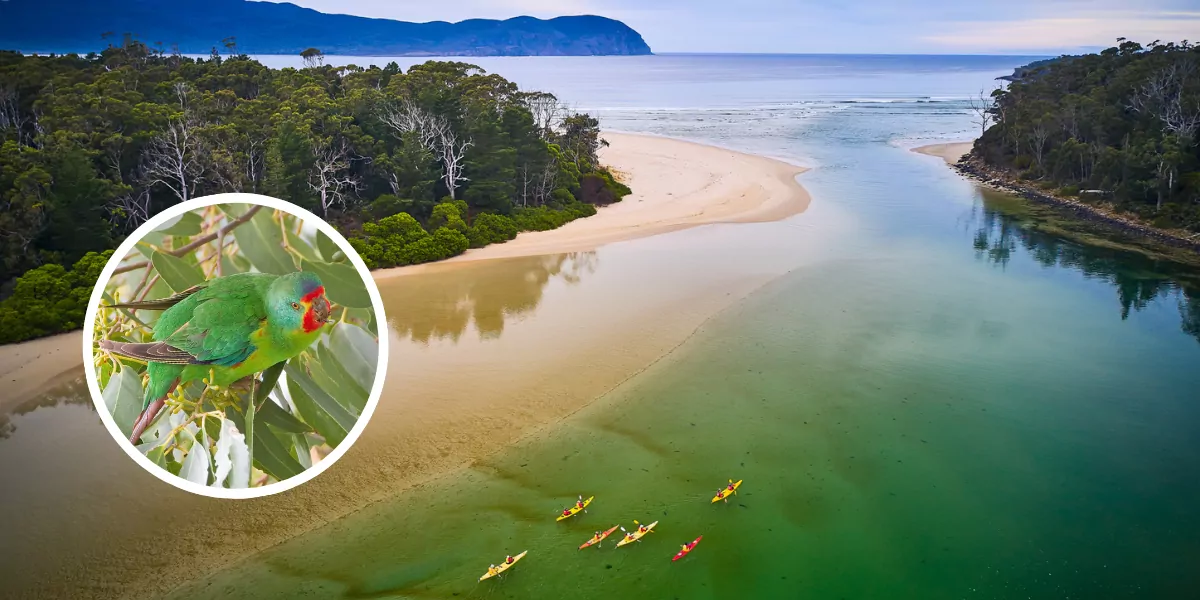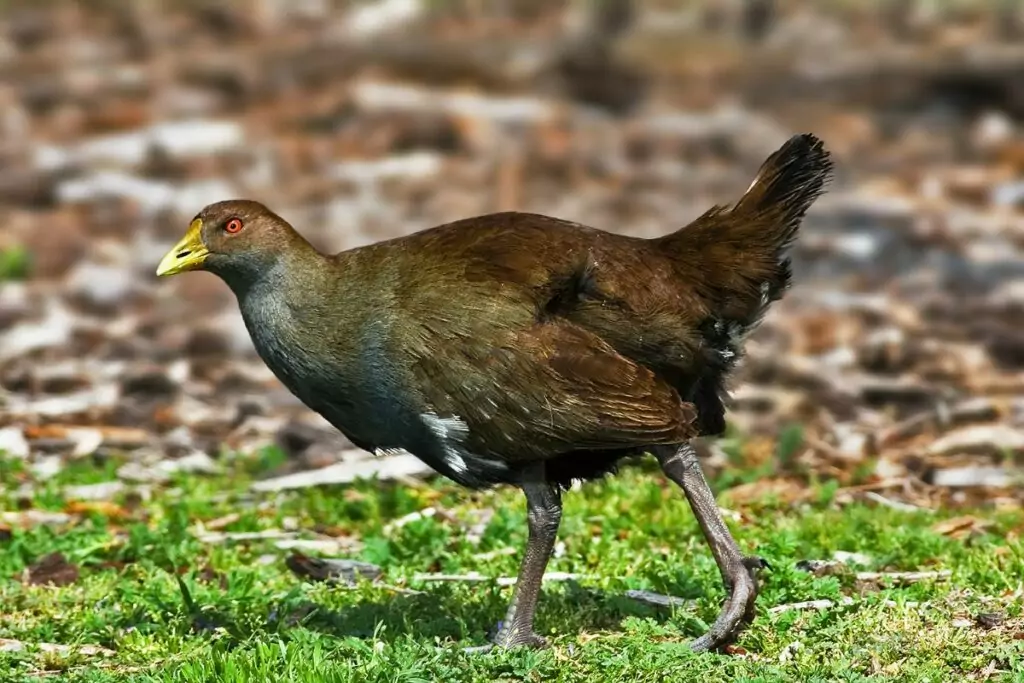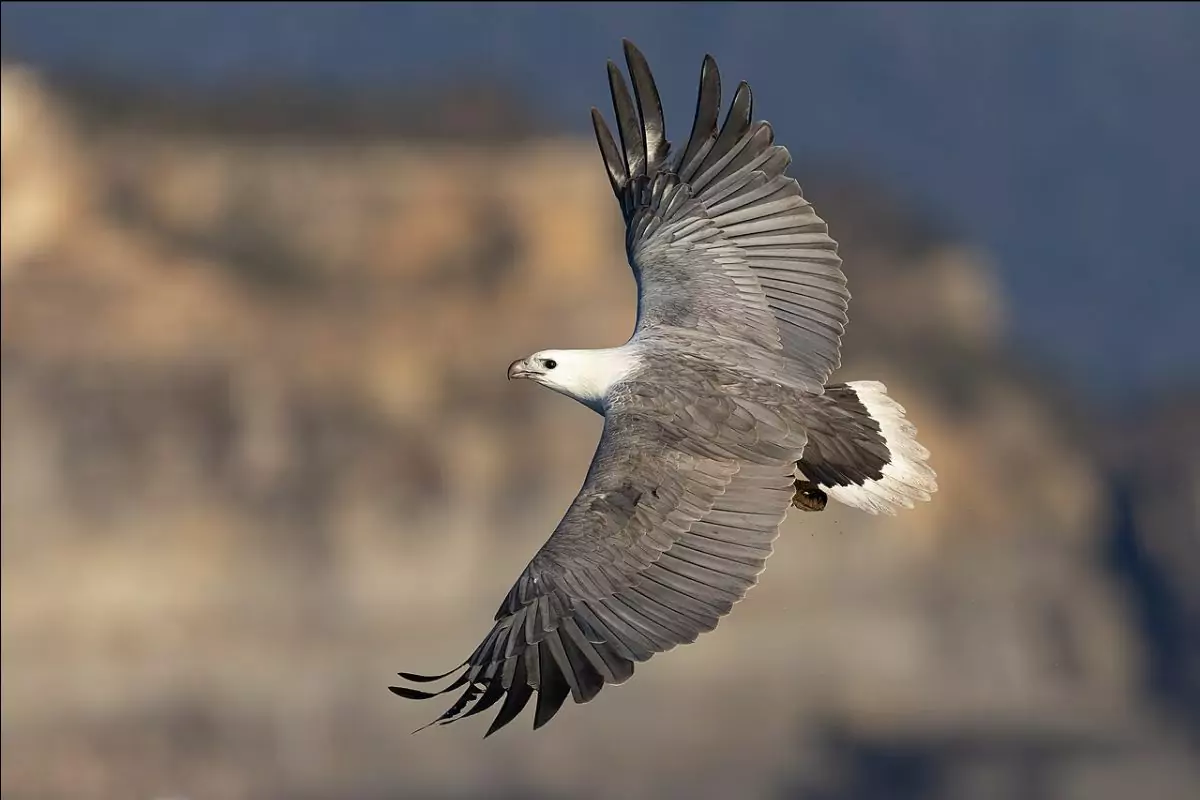top birds to spot on a tasmanian kayak adventure
As far as bird-watching (and paddling!) destinations go, it doesn’t get much better than beautiful Tasmania. The island’s diverse landscapes, ranging from rugged coastlines to dense eucalypt forests, are a haven for a variety of bird species, including several that are unique to the state.
Our Tasmanian adventures – Three Capes Paddle, Bruny Island Paddle and Freycinet Peninsula Kayak Expedition – each offer not only unique kayaking experiences, but also diverse and delightful bird-watching opportunities.
Below, we’ve listed eight highlight bird species that you might spot on a SSV Tasmania paddling trip.
Tasmanian Wedge-tailed Eagle
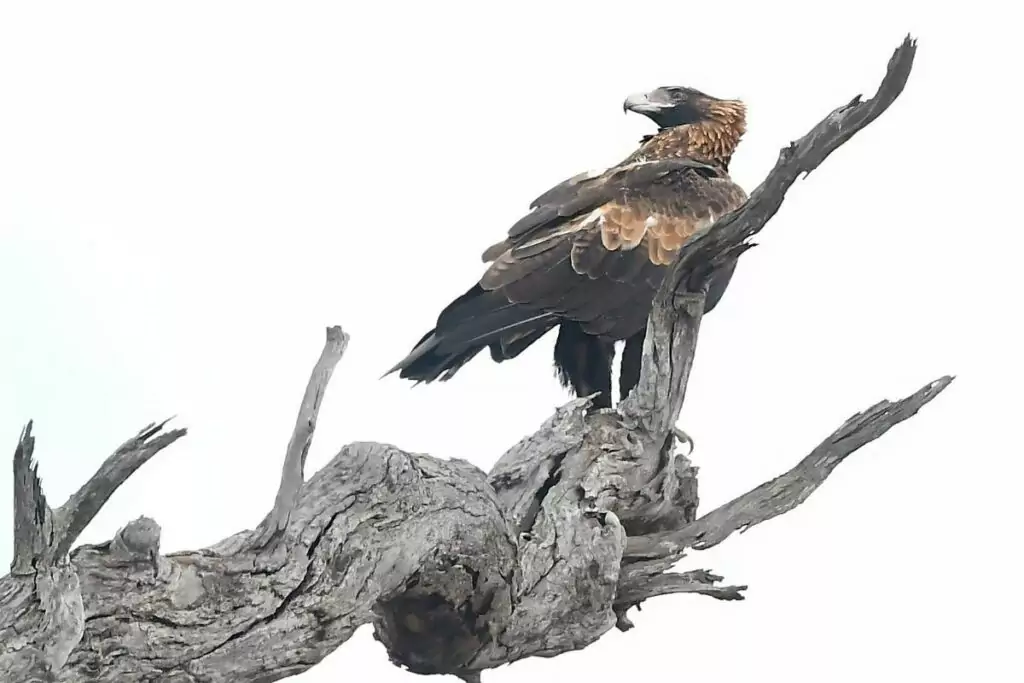
The Tasmanian Wedge-tailed Eagle is a majestic and powerful bird, larger than its mainland counterpart. With a wingspan that can reach over two metres, it is one of Tasmania’s most awe-inspiring birds of prey. They can often be seen soaring high above the mountains and forests, scanning the land for prey. Their nests are typically located in tall trees or on cliff faces, making sightings a truly spectacular event.
Look out for this bird on any of our Tasmanian adventures!
albatross
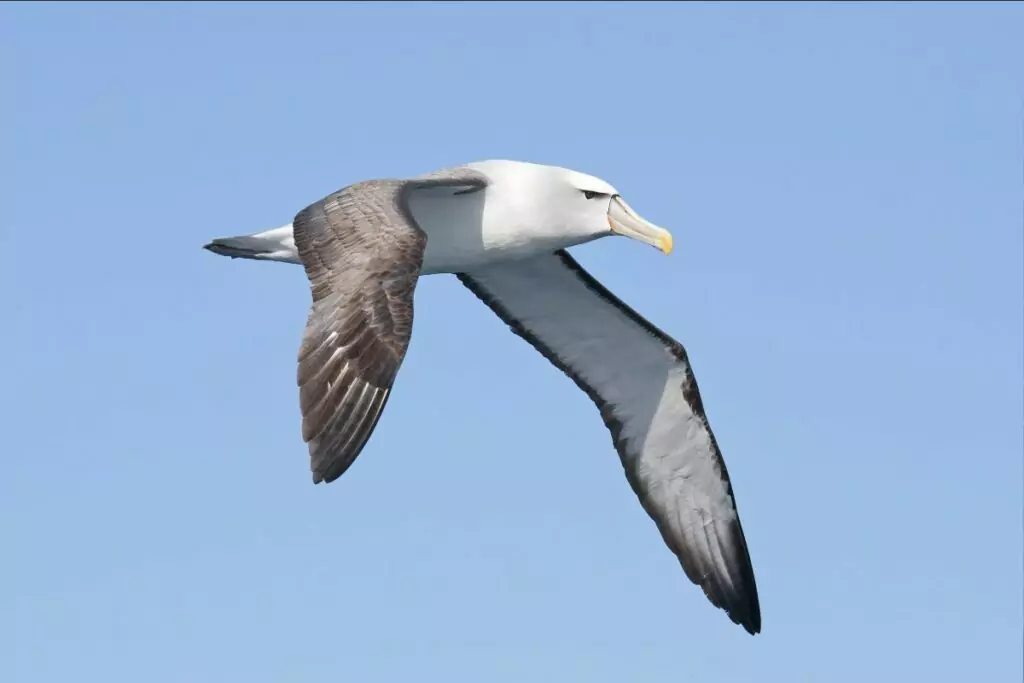
Look out for this bird on our Freycinet Peninsula Kayak Expedition.
Swift Parrot
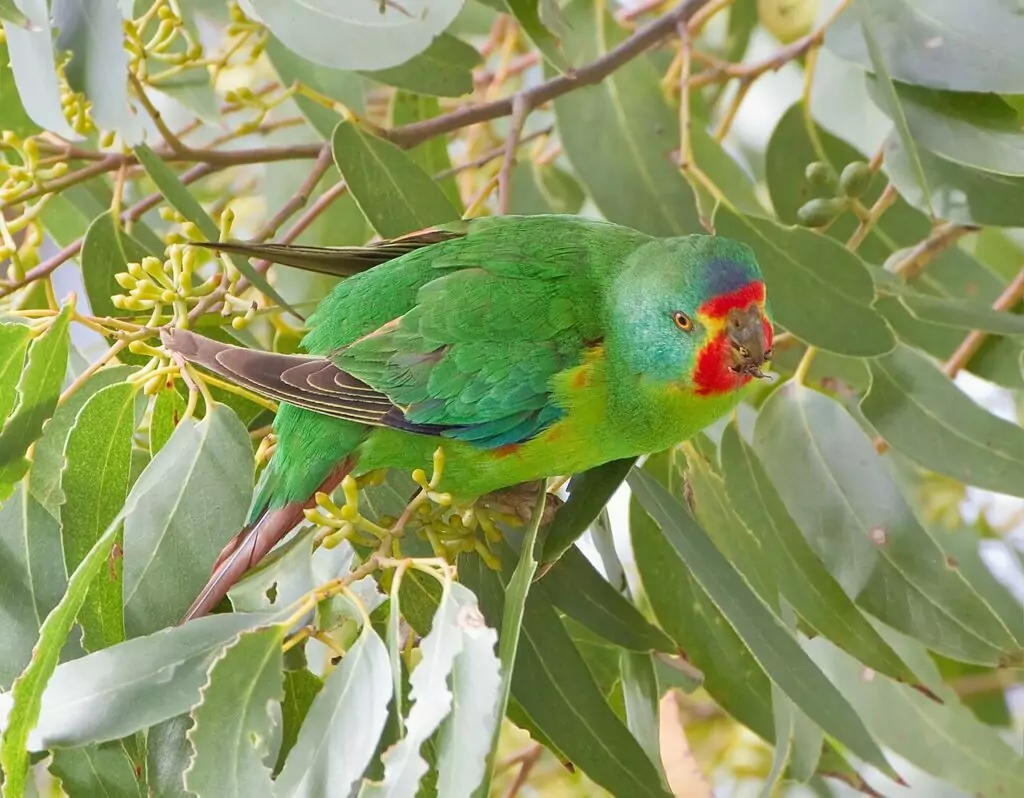
Look out for this bird on our Bruny Island Paddle and Three Capes Paddle.
Australasian Gannet
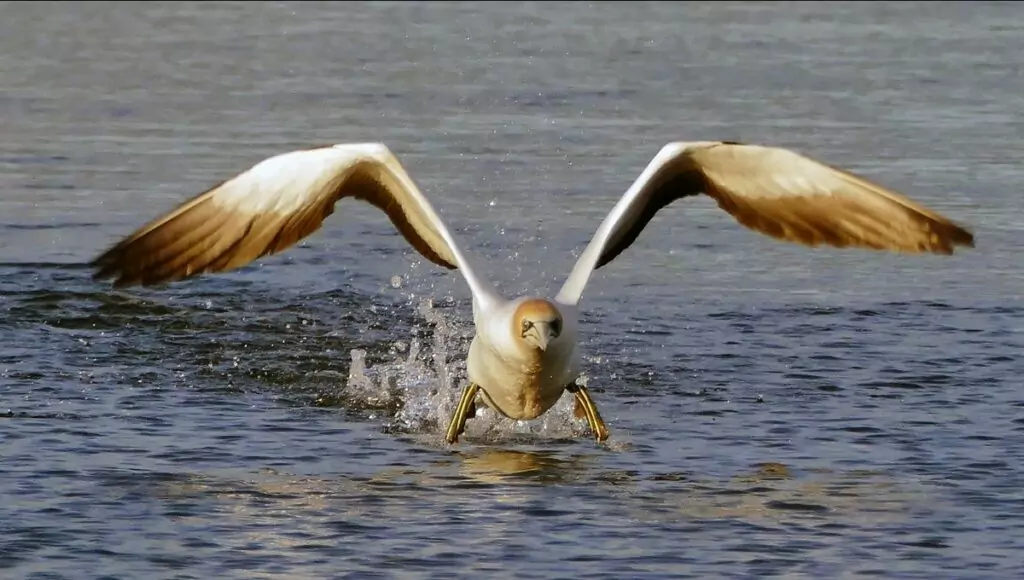
The Australasian Gannet is a remarkable seabird, known for its dramatic diving behaviour. With their stark white plumage and black-tipped wings, they stand out against the blue ocean backdrop. Their nesting colonies are usually located on offshore islands, but they can frequently be seen foraging along the coast. Observing these gannets dive is a captivating sight and a true testament to their prowess as ocean hunters.
Look out for this bird on our Freycinet Peninsula Kayak Expedition
Yellow Wattlebird
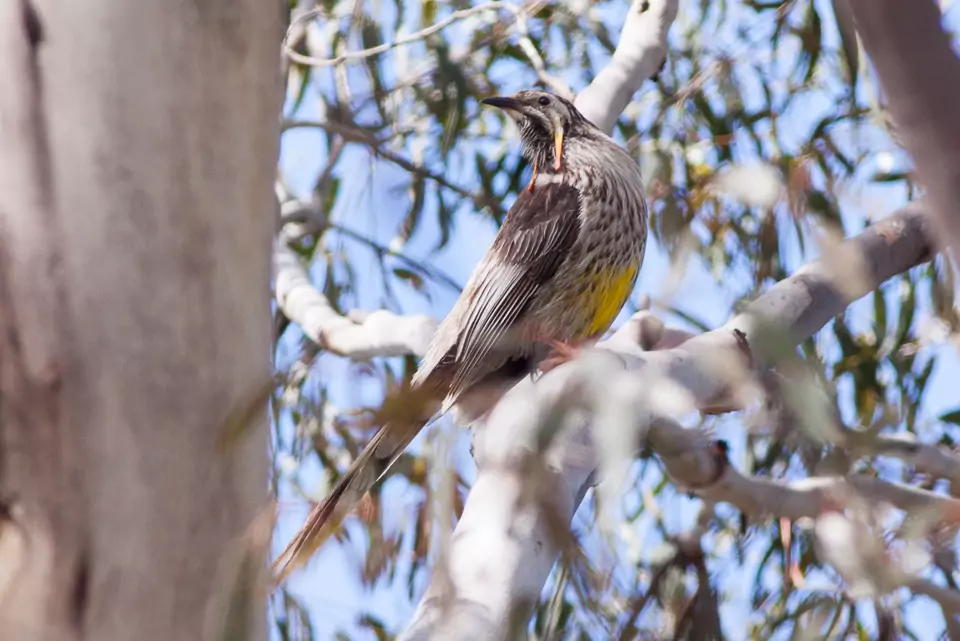
Look out for this bird on our Freycinet Peninsula Kayak Expedition
Forty-spotted Pardalote
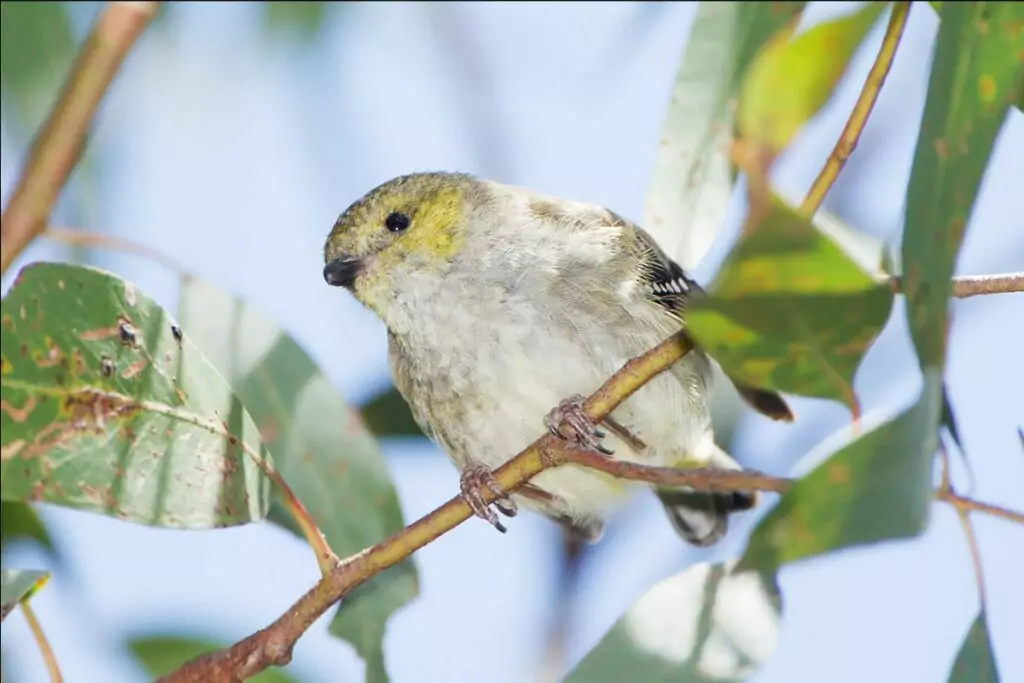
Endemic to Tasmania, this tiny, critically endangered bird is known for its distinctive forty spots and a unique feeding behavior called ‘lerp’ harvesting, making it a fascinating species for birdwatchers.
The forty-spotted pardalote is one of Australia’s rarest birds and can now only be found in south eastern Tasmania where they rely on white gum trees in dry eucalypt forests for nesting and feeding.
Look out for this bird on our Bruny Island Paddle.
